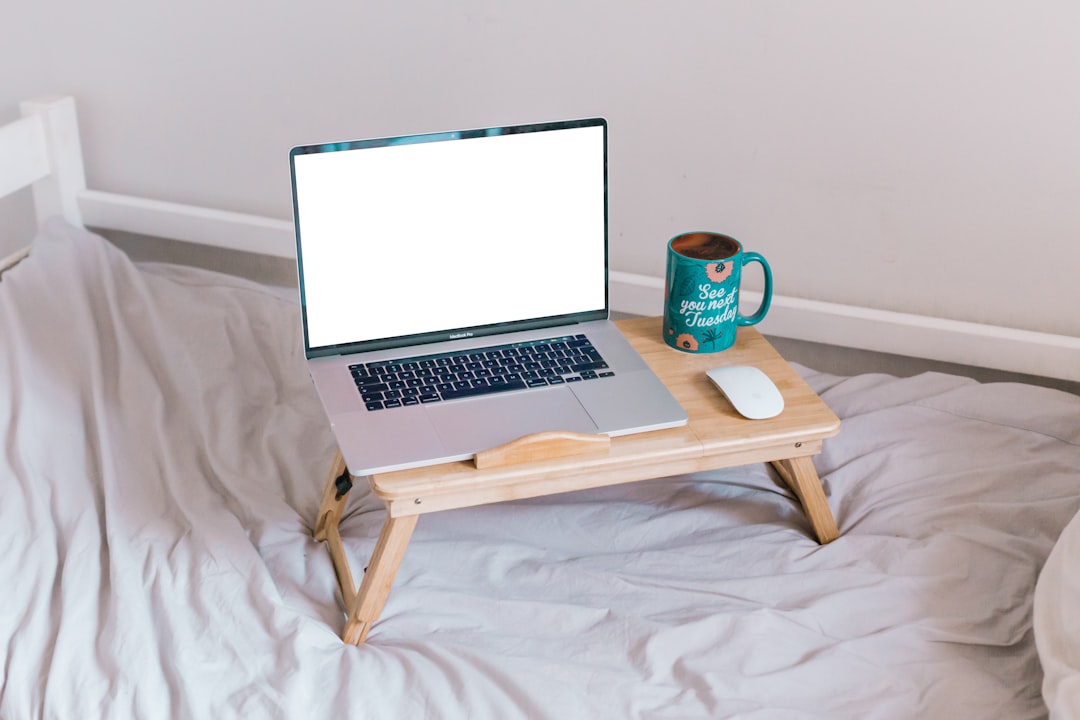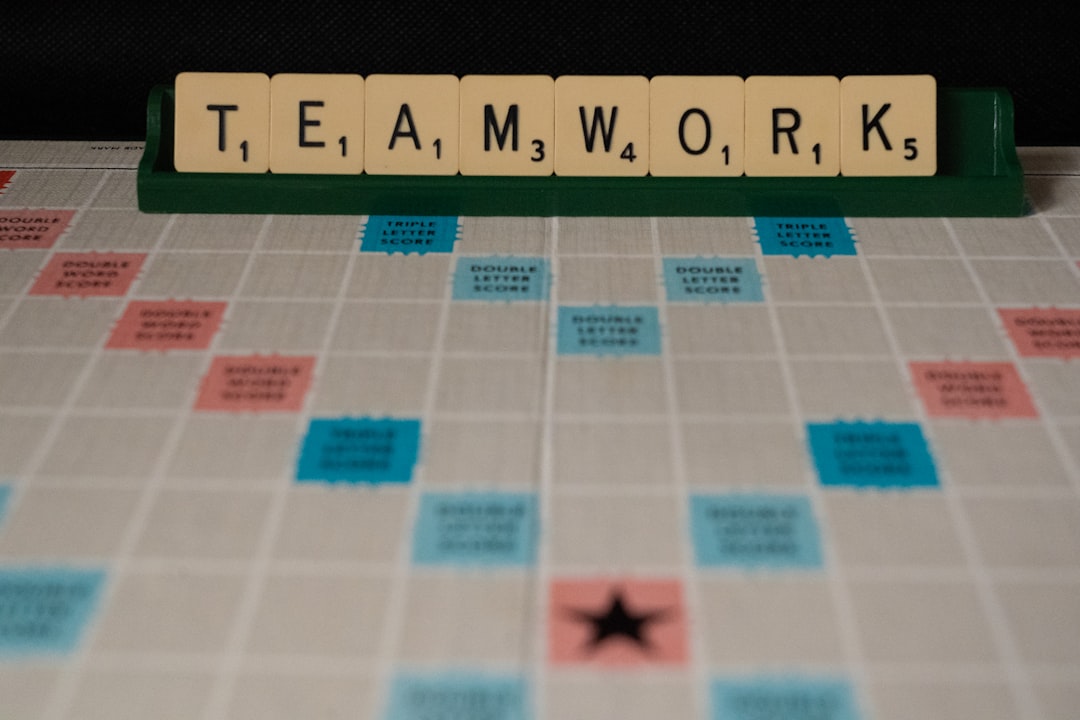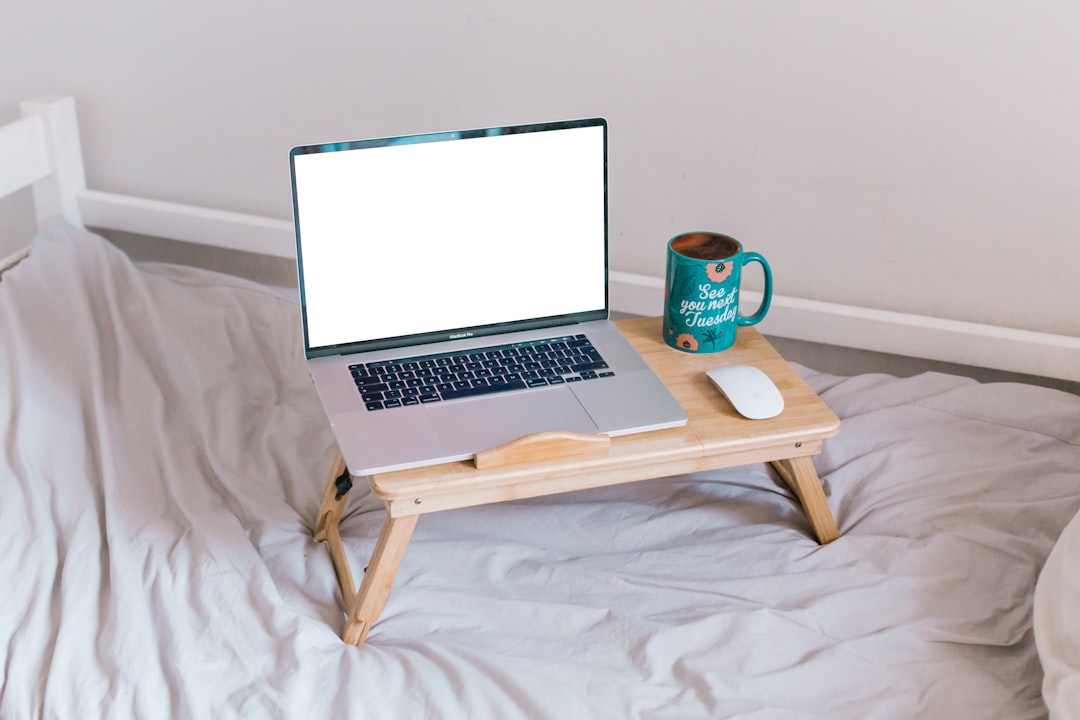Balancing Work and Exploration Productivity Hacks for Nomads

Introduction
The freedom to work from any corner of the world is one of the most compelling promises of the digital nomad lifestyle. Yet the same freedom can become a source of distraction when the line between “office” and “adventure” blurs. For many nomads, the biggest productivity challenge is not a lack of tools or talent, but the constant pull of new sights, sounds, and experiences that compete for attention.
Balancing work and exploration is less about sacrificing one for the other and more about designing a system that lets both coexist. The goal is to create a rhythm where the mind can switch cleanly between focused output and immersive travel, without feeling guilty or burnt out. The following guide presents a collection of practical hacks, mindset shifts, and real‑world examples that help nomads maintain high productivity while still feeding their curiosity about the world.
Adopt a “Mission‑First” Mindset
When you are constantly moving, the temptation to treat each day as a vacation is strong. The most effective way to stay productive is to reframe work as a core part of the travel mission rather than an afterthought.
- Define a clear purpose for each trip. Ask yourself what you hope to achieve professionally while you are in a new city. Is it completing a client project, launching a product, or building a portfolio piece?
- Write a mission statement that ties together your work goals and the cultural experiences you want to pursue. A concise sentence such as “Deliver the website redesign by Friday and spend Saturday exploring the local food market” anchors the day.
- Visualize success each morning. A quick mental rehearsal of finishing a key task before stepping out for a walk reinforces the priority hierarchy.
When the mission is front‑and‑center, the urge to postpone work for the next sunrise diminishes, and the reward of exploration feels like a well‑earned break.
Build a Flexible Daily Framework
Rigid 9‑to‑5 schedules rarely survive on the road. Instead, adopt a flexible framework that respects the ebb and flow of energy, time zones, and local rhythms.
Identify Your Peak Hours
Every person has a window when mental clarity and focus are at their highest. Track your energy for a week by noting when you feel most alert. Typical patterns include:
- Early morning (5 am–9 am) after a sunrise jog
- Mid‑afternoon (1 pm–4 pm) after a light lunch
Once identified, reserve those windows for deep work that requires concentration, such as writing code, drafting proposals, or creating content.
Create “Work Blocks”
Divide the day into three to four work blocks of 90–120 minutes each. Use a timer to protect the block from interruptions. Between blocks, schedule short micro‑breaks (5–10 minutes) to stretch, hydrate, or glance at the surrounding scenery.
Reserve “Exploration Slots”
Allocate specific periods for sightseeing, networking events, or local immersion. By pre‑booking these slots, you remove the internal conflict of wondering whether you should be working or exploring.
Allow Buffer Time
Travel often introduces unexpected delays—flight changes, internet outages, or local festivals. Build a 30‑minute buffer at the start or end of each day to absorb these disruptions without derailing the entire schedule.
Optimize Your Mobile Workspace
A reliable, comfortable workspace is the cornerstone of remote productivity. Since nomads rarely have a permanent desk, the setup must be portable, ergonomic, and adaptable to a variety of environments.
Core Gear Checklist
- Lightweight laptop with long battery life (13‑inch models are ideal)
- Compact external keyboard and mouse for ergonomics
- Foldable laptop stand to achieve a 90‑degree screen angle
- Noise‑cancelling headphones for focus in cafés or co‑working spaces
- Universal power adapter and spare power bank (minimum 20 000 mAh)
Create an “Office in a Bag”
Pack your core gear in a dedicated travel bag that can double as a briefcase. Keep cables, chargers, and adapters organized in a small pouch. When you arrive at a new location, unpack only the essentials and store the rest in a safe place. This reduces setup time and mental clutter.
Choose the Right Workspace
- Co‑working spaces provide reliable Wi‑Fi, ergonomic chairs, and a professional vibe. Many offer day passes or monthly memberships that can be paused.
- Cafés with power outlets are great for short bursts of work but can become noisy during peak hours. Arrive early to secure a seat near a plug.
- Public libraries often have quiet zones and free high‑speed internet, though some require a local ID for entry.
Scout a few options online before you arrive. Apps such as “Workfrom” or “Coworker” list user‑rated spaces with photos, price ranges, and opening hours.
Leverage Technology for Seamless Collaboration
Even the most disciplined nomad can stumble when communication breaks down. A curated suite of tools keeps collaboration fluid, reduces context switching, and safeguards data.
Communication Stack
- Instant messaging: Slack or Discord channels for real‑time updates with clients or teammates.
- Video conferencing: Zoom or Google Meet with integrated screen sharing for virtual meetings.
- Voice notes: Use a simple app like WhatsApp or Signal to send quick audio updates when typing feels cumbersome.
Project Management
- Kanban boards: Trello or ClickUp let you visualize tasks as cards that move across columns (To‑Do, In Progress, Done).
- Time tracking: Toggl or Clockify helps you log hours for billing and self‑assessment.
- Document collaboration: Google Workspace or Notion provide live editing, version history, and easy sharing.
Automation and Integration
- Zapier or Make can connect apps, such as automatically creating a Trello card when a new email lands in a specific Gmail label.
- Keyboard shortcuts and text expanders (e.g., PhraseExpress) cut down repetitive typing.
Set up these tools once, then fine‑tune the notifications to avoid constant pings that interrupt deep work.
Plan Travel Around Your Work Rhythm
Travel logistics often dictate productivity more than personal discipline. By planning your itinerary with work considerations in mind, you reduce friction between the two worlds.
Choose Base Cities with Strong Infrastructure
Cities known for reliable internet, coworking options, and affordable living (e.g., Chiang Mai, Medellín, Lisbon) make for smoother work periods. If your project requires heavy bandwidth (e.g., video editing), prioritize destinations with fiber connections.
Schedule Flights and Transport Wisely
- Opt for early‑morning flights when possible; they free up the rest of the day for work.
- Allow a recovery window after long-haul travel before committing to high‑stakes deadlines.
- Use flight time for low‑cognitive tasks like reading industry newsletters, replying to non‑urgent emails, or brainstorming ideas.
Align Time Zones With Clients
When working with clients in specific regions, try to base yourself in a time zone that overlaps at least a few hours of their business day. This minimizes the need for late‑night calls or early‑morning meetings.
Manage Energy, Not Just Time
Productivity hinges on mental and physical stamina. Nomads face unique stressors—jet lag, unfamiliar diets, and constantly shifting routines. Energy management strategies keep the mind sharp.
Prioritize Sleep Hygiene
- Stick to a consistent bedtime, even when crossing time zones.
- Use blackout curtains or a sleep mask to simulate darkness.
- Limit caffeine after noon to avoid sleep disturbances.
Nutrition on the Move
- Choose protein‑rich breakfasts (e.g., Greek yogurt, eggs) to sustain focus.
- Keep a stash of nuts, dried fruit, or protein bars for quick snacks during work blocks.
- Stay hydrated; carry a reusable water bottle and set reminders to sip regularly.
Physical Movement
- Short, frequent movement breaks (stretching, walking around the block) prevent stiffness and boost circulation.
- Incorporate a daily 20‑minute exercise routine—bodyweight circuits, yoga, or a quick run—either before the first work block or after the final one.
When the body feels cared for, the brain naturally gravitates toward deep work.
Set Boundaries With Yourself and Others
Without a traditional office, it is easy for work to spill into personal time and vice versa. Clear boundaries protect both productivity and mental health.
Define “Work‑Only” Zones
Designate a specific corner of your accommodation or a particular café as the exclusive work area. When you leave that zone, mentally switch off work mode.
Communicate Availability
Share your daily schedule with clients and teammates. A simple message like “I’ll be offline from 6 pm to 9 pm local time for sightseeing” sets expectations and reduces after‑hours interruptions.
Use Digital “Do Not Disturb” Signals
- Activate the “Do Not Disturb” mode on your phone and computer during deep work blocks.
- Set status indicators in Slack or Teams (e.g., “Focused – will respond after 2 pm”).
Practice “Digital Sunset”
Turn off all work‑related notifications at least an hour before bedtime. Use this period for reading, journaling, or enjoying the local environment without the lure of email.
Cultivate a Nomadic Community
Isolation can erode motivation. Building relationships with fellow nomads creates accountability, knowledge exchange, and social support.
Join Local Meetups
- Search platforms like Meetup.com for “digital nomad” or “remote work” events in the city you are staying.
- Attend coworking space community nights or skill‑share workshops.
Participate in Online Forums
- Subreddits such as r/digitalnomad and Discord servers dedicated to remote freelancers provide daily tips and job leads.
- Contribute by sharing your own hacks; teaching reinforces your own habits.
Find an Accountability Partner
Pair up with another nomad who has complementary work hours. Check in weekly to review goals, share obstacles, and celebrate wins. This simple practice adds a layer of external motivation without feeling like supervision.
Real‑World Case Studies
Below are three brief narratives illustrating how different nomads applied the hacks above to achieve a sustainable balance.
The Graphic Designer in Bali
Mia moved to Ubud for a six‑month contract with a European agency. She identified her peak hours as 7 am–11 am when the island was quiet. She booked a coworking desk at Hubud and set up a portable workstation with a laptop stand and external keyboard. By reserving afternoons for surf lessons and temple visits, she never felt guilty about missing work. She also used Trello to track daily deliverables and set a “no‑client‑emails after 2 pm” rule, preserving evenings for cultural immersion. Her project completed ahead of schedule, and she reported a 30 % increase in creative output thanks to the structured routine.
The SaaS Founder in Medellín
Luis launched a SaaS product while traveling through Colombia. He prioritized reliable internet, choosing neighborhoods with fiber connections. He adopted a weekly “focus sprint” where Monday and Tuesday were dedicated to product development, Wednesday to client calls, and Thursday to marketing experiments. He automated onboarding emails with Zapier, freeing up hours for community engagement. By joining a local startup accelerator, he gained a mentor who helped him refine his time‑zone strategy, aligning his team’s stand‑up meetings to 9 am Medellín time. This alignment reduced meeting fatigue and allowed him to explore the city’s nightlife without compromising work.
The Content Writer in Lisbon
Ana, a freelance writer, struggled with constant café distractions. She purchased a compact laptop stand and a portable monitor, turning her Airbnb balcony into a quasi‑office. She used Notion to outline articles and set a Pomodoro timer for 25‑minute writing bursts. For breaks, she walked to nearby viewpoints, using the scenery as mental reset cues. By scheduling all client deliveries for Fridays, she kept Mondays free for local language classes and cultural tours. The clear deadline cadence gave her clients confidence and gave her the freedom to explore Lisbon’s neighborhoods without pressure.
These stories demonstrate that the same principles—defined mission, flexible framework, optimized workspace, tech stack, energy care, boundaries, and community—can be tailored to diverse professions and locales.
Quick Reference Checklist
- Mission First – Write a one‑sentence purpose for each trip.
- Peak Hours – Identify when you are most alert; reserve for deep work.
- Work Blocks – Use 90‑minute focused sessions with timed breaks.
- Exploration Slots – Schedule sightseeing in advance.
- Portable Office – Laptop, external keyboard, stand, headphones, power bank.
- Reliable Wi‑Fi – Research coworking spaces or cafés with good reviews.
- Communication Tools – Set up Slack, Zoom, and a project board.
- Automation – Create at least one Zapier workflow to reduce manual tasks.
- Sleep Routine – Aim for 7‑9 hours; keep a consistent bedtime.
- Nutrition – Pack protein snacks; stay hydrated.
- Movement – Take a 5‑minute stretch every hour.
- Boundaries – Mark a “work‑only” zone; use Do Not Disturb.
- Digital Sunset – Shut off work notifications one hour before sleep.
- Community – Attend one local meetup per week; join an online forum.
Ticking off each item each week helps embed the habits that keep work and travel in harmony.
Conclusion
Balancing work and exploration is a dynamic art rather than a static rulebook. The digital nomad environment constantly reshapes the variables—time zones, internet reliability, cultural rhythms—that influence productivity. By treating work as an integral part of the travel mission, constructing flexible daily structures, optimizing a mobile workspace, leveraging the right technology, planning travel with work in mind, managing energy, setting firm boundaries, and nurturing a supportive community, nomads can achieve a sustainable rhythm that fuels both professional success and personal enrichment.
The hacks presented here are not prescriptive mandates; they are a toolbox. Experiment with each technique, adapt it to your unique circumstances, and iterate until the balance feels natural. When the system works, the world becomes not a distraction from work but a source of inspiration that fuels higher‑quality output. In that sweet spot, the nomadic lifestyle lives up to its promise: the ability to earn a living while continually discovering new horizons.
Random Posts

Step by Step Roadmap to Becoming a Fulltime Nomad
Follow a clear step-by-step roadmap to assess your motivations, build remote income, set up travel logistics and sustain productivity, so you can confidently transition from a 9 to 5 to a full-time nomad life.
3 weeks ago

The Complete Nomad Starter Kit Checklist and Planning Guide
Ready to hit the road? This guide gives you a step-by-step checklist and planning roadmap for a nomadic life, covering mindset, gear, documents, finances, so you launch confidently and never miss a detail.
1 month ago

Proven Methods To Keep Remote Teams Aligned And Productive
Discover research-backed tactics to align remote teams, boost communication, and sustain productivity across time zones with simple habits, clear rituals and smart tools you can implement today.
3 weeks ago

Travel Light with the Perfect Tech Kit for Digital Nomads
Learn how to pack a lean, high-performing tech kit that keeps you productive on the road, with essential devices, smart accessories, backup plans and space-saving packing tips for every digital nomad.
2 weeks ago

Explore Remote Friendly Cities with Essential Nomad Gear
Discover the top remote-friendly cities and the must-have gear that keeps you productive on the move. Learn what internet standards, coworking vibes, and essential equipment make any destination a smooth, inspiring digital-nomad base.
1 month ago
Latest Posts

Essential Software Every Remote Professional Should Use
Master remote work with essential tools: instant messaging like Slack, high definition video calls such as Zoom, and asynchronous voice apps. Streamline communication, stay connected and boost productivity.
1 day ago

Mastering Remote Work Productivity for Digital Nomads and Freelancers
Learn proven habits, tools, and tactics that help digital nomads and freelancers stay focused, deliver quality work, and maintain a sustainable lifestyle while traveling the world.
1 day ago

Tech‑Friendly European Towns Perfect for Remote Living
Discover Europe’s best small towns where fast internet, affordable living and vibrant tech communities let you work remotely while soaking up historic charm, lakeside views or mountain air.
1 day ago